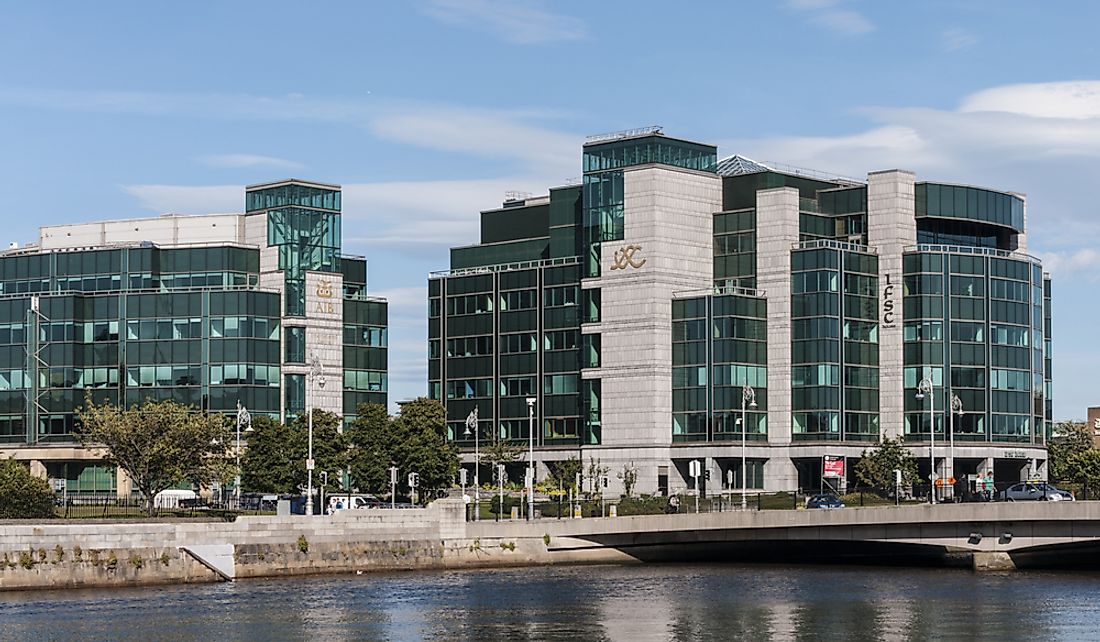What Are The Biggest Industries In Ireland?

The Republic of Ireland is one of the richest countries in the world. The economy of Ireland can be described as a knowledge economy (application of knowledge to generate tangible and intangible value) which mainly focuses on financial service, high tech, and life science. In terms of global GDP per capita ranking, Ireland is 5th out of 187 (IMF) and 6th of 175 (World Bank). Ireland has a sustained period of continuous economic growth from 1984 to 2007, but this growth was slowed by the financial crisis of 2008. It became the first EU member to enter recession related to the 2008 financial crisis. However, the recovery of the economy in 2014, growing by 4.8%, making the country the fastest growing economy in the EU. Ireland had a strong 2018, with unemployment dipping below 5.5% and GDP grew by about 4%. Several industries have contributed to the growth currently witnessed in the country.
Primary Industries
The primary industries of Ireland rely on its rich natural resources and include agriculture, mining, forestry, and fishing. These industries account for 5% of the country’s GDP and employ about 8% of the total labor force. Ireland has a great potential for agriculture considering its large fertile pasture, particularly in the southern and midland regions. However, agriculture contributes only 1% of the GDP. The agri-sector accounted for about 7% of the gross added value, 9% of the national employment, and 10% of merchandise export in 2016. The agri-food export included high-value dairy brands produced by companies such as Greencore, Kerry Group, Ornua, and Glanbia. With a 9% forest cover, Ireland is one of the least forested countries in Europe. It mainly relies on wood import as it tries to increase the forest cover. The country’s coastline once had abundant fisheries resource, especially cod. However, due to overfishing, the fishing industry has been forced to focus on aquaculture. The mining industry relies mainly on the production of lead, zinc, alumina, and a small quantity of minerals such as copper, gold, limestone, and gypsum. Ireland is one of the major exporters of zinc. Extraction of natural gas takes place in Corrib and Kinsale Gas Fields where there are an approximately 20 billion cubic meters of proven reserves.
Pharmaceutical and Medical Technology Industries
The pharmaceutical and medical technology industry is one of the fastest growing industries in Ireland as a result of the high demand, steep competition, and emerging start-ups. The medical technology and research sector has over 100 companies responsible for the employment of about 25,000 people and generating 9.4 billion euros annually. The pharmaceutical industry, on the other hand, employs nearly 50,000 and generates about 60 billion euros of export annually. Most of the pharma companies are based in Ringaskiddy and Little Island. Biologics is the fastest growing sector within the pharma industry with expansions and several start-ups taking place.
Software and ICT Industries
The success of the technology industry in Ireland has resulted from the increase in the number of foreign companies setting up their offices in the country, especially in Dublin. Due to the impending Brexit, more and more fintech companies are moving to Dublin. The ICT sector employs over 35,000 people, generating about 35 billion euros annually. Ireland has over 200 ICT companies including most of the top ten largest ICT companies. Most of these companies are based in Dublin and include Facebook, Google, eBay, Amazon, LinkedIn, Twitter, Paypal, and Microsoft. The software sector generates over 16 billion euros annually and employs about 20,000 people. Ireland is the second-largest exporter of software in the world. Some of the top ten global technology firms like Apple have their operations in Ireland.
Financial Service Industry
Although the financial service sector was greatly affected by the Financial Crisis of 2008, the sector has since recovered and is currently experiencing considerable growth which is set to continue into the coming years. The sector employs nearly 35,000 people and generates an average of 2 billion euros in taxes. The country continues to attract, develop, and retain financial services, thanks to the continued foreign direct investments. Ireland is Europe’s 7th largest provider of wholesale financial services. Most of the financial companies can be found at the International Financial Service Center in Dublin. There are over 60 credit institutions in Ireland and the banking sector is dominated by Bank of Ireland, AIB Bank, and Ulster Bank.
Export and Trade Industry
Trade and export are the main components of the economy of Ireland. All the manufactured products must be sold for the country to earn revenue. In 2009, trade in the country was worth about 270 billion euros, generated mainly from service and merchandise trade. Export plays a significant role in the growth of the economy. Ireland is among the largest exporter of software-related goods, medical devices, and pharmaceuticals. The country is also the largest producer of zinc and the second-largest producer of lead in Europe. These minerals contribute greatly to Ireland’s export earnings.











